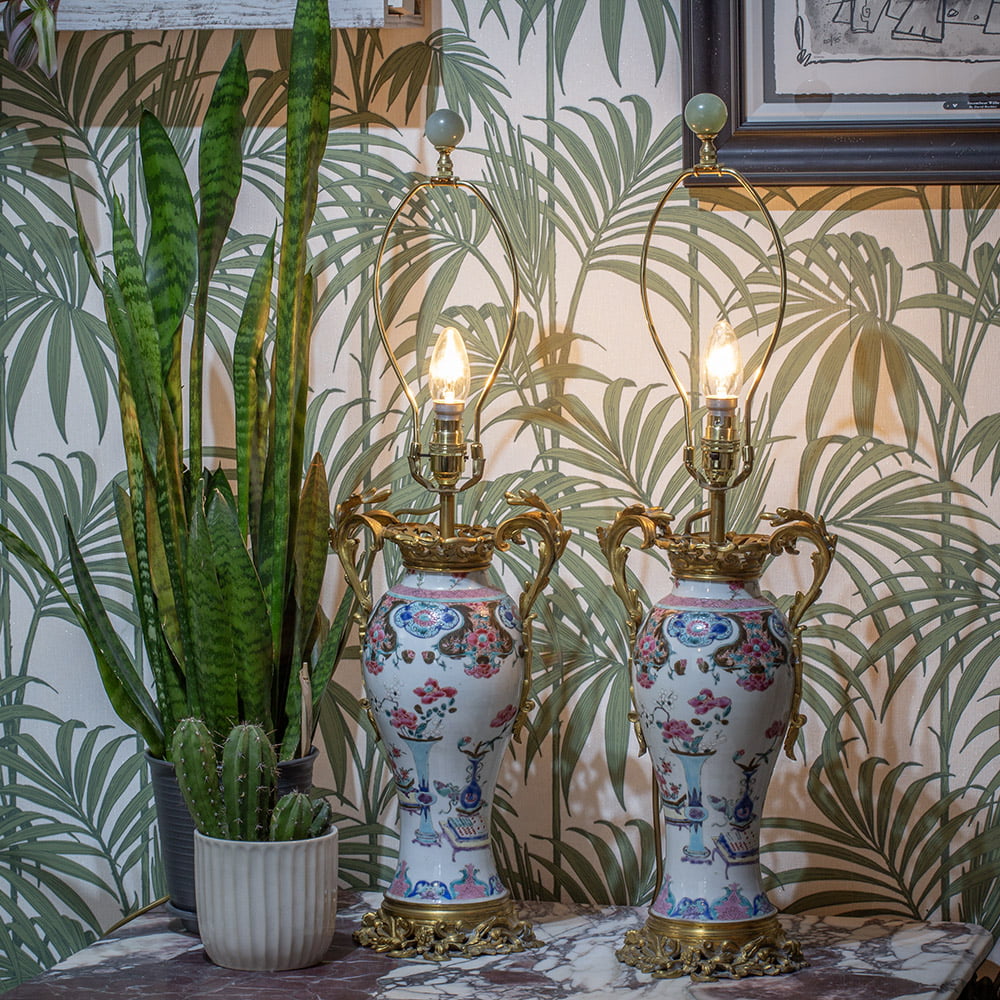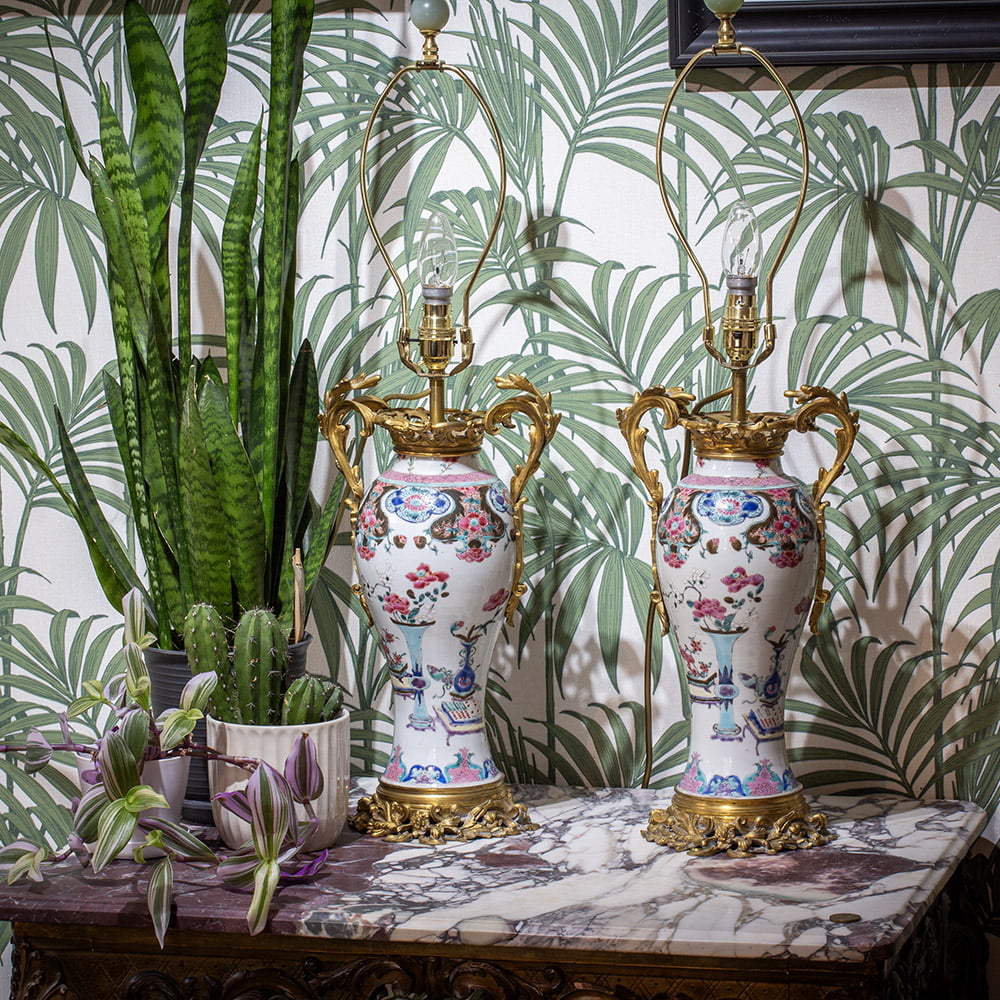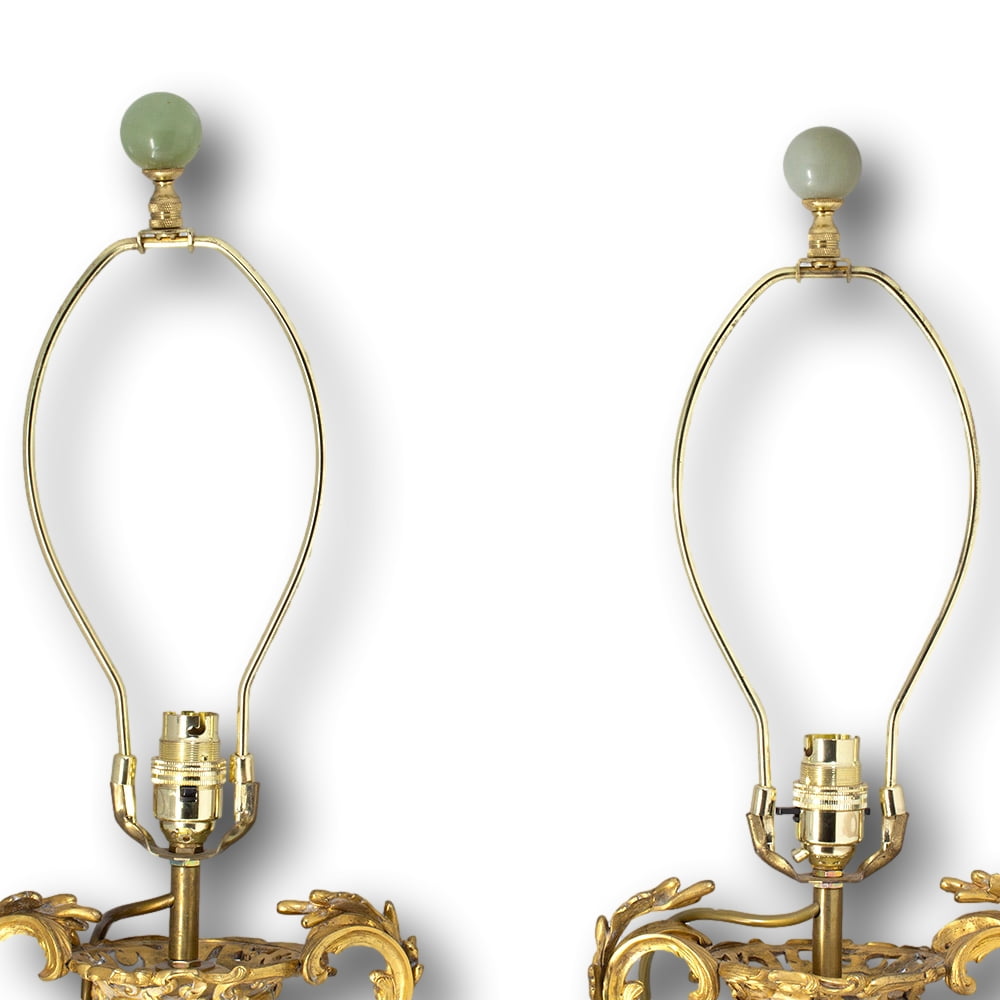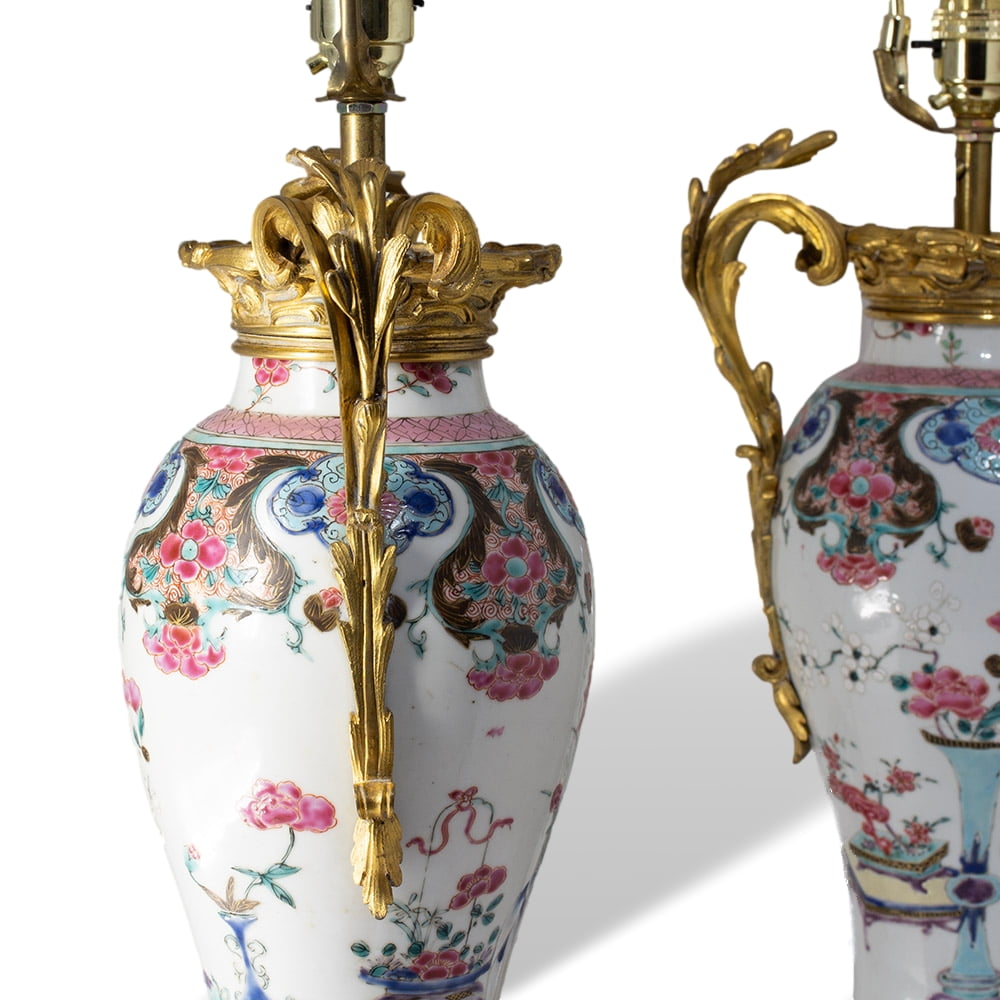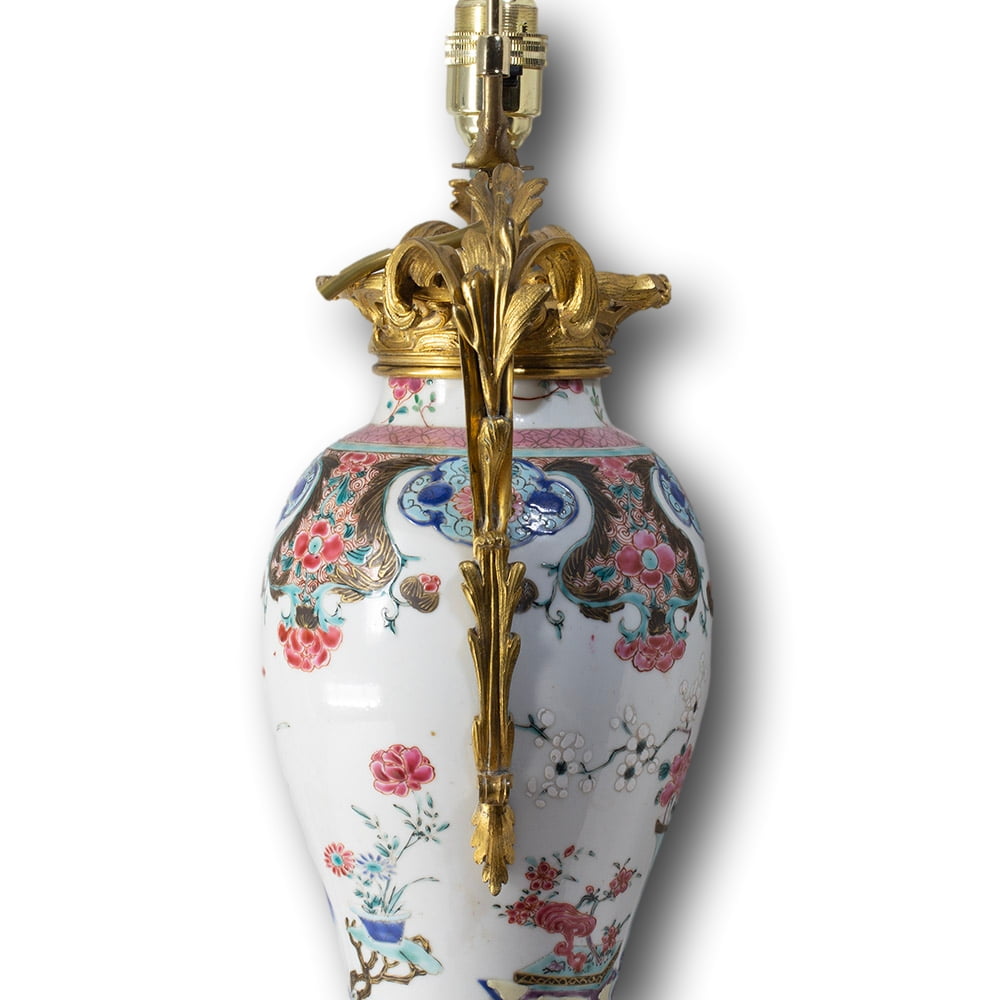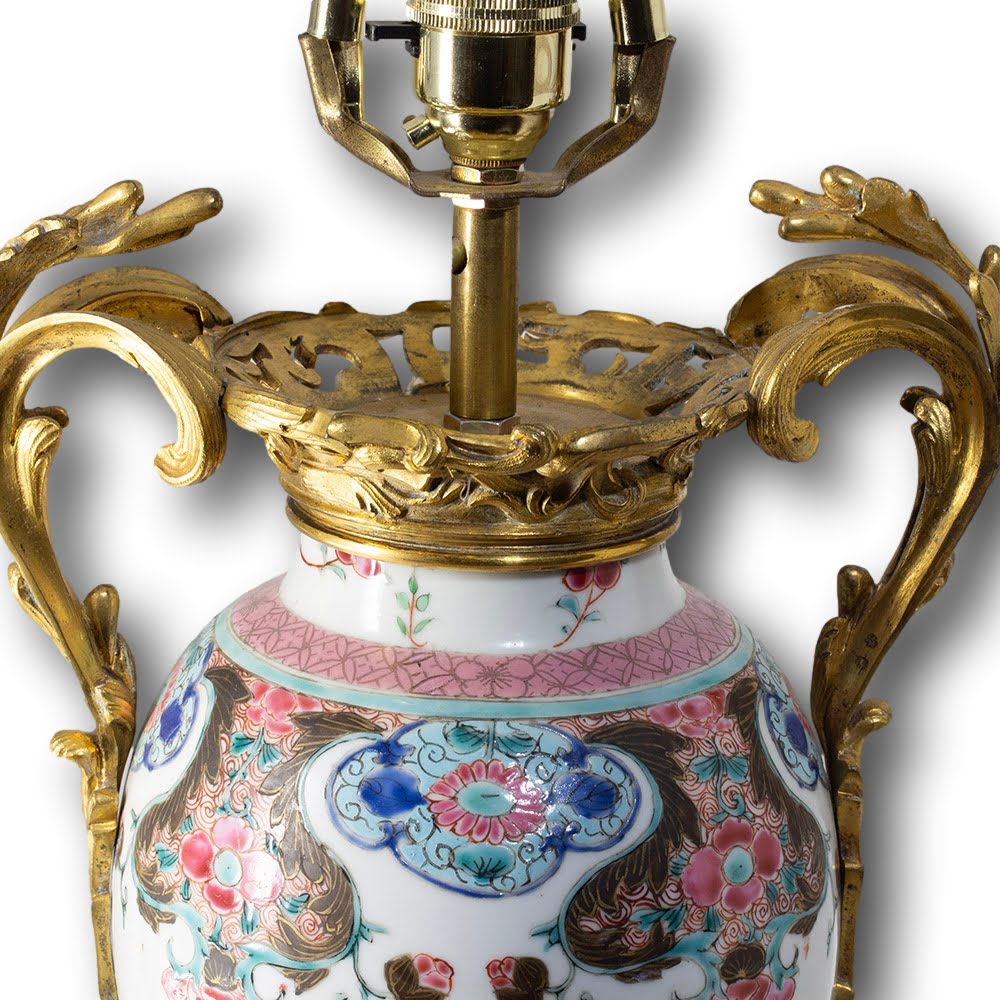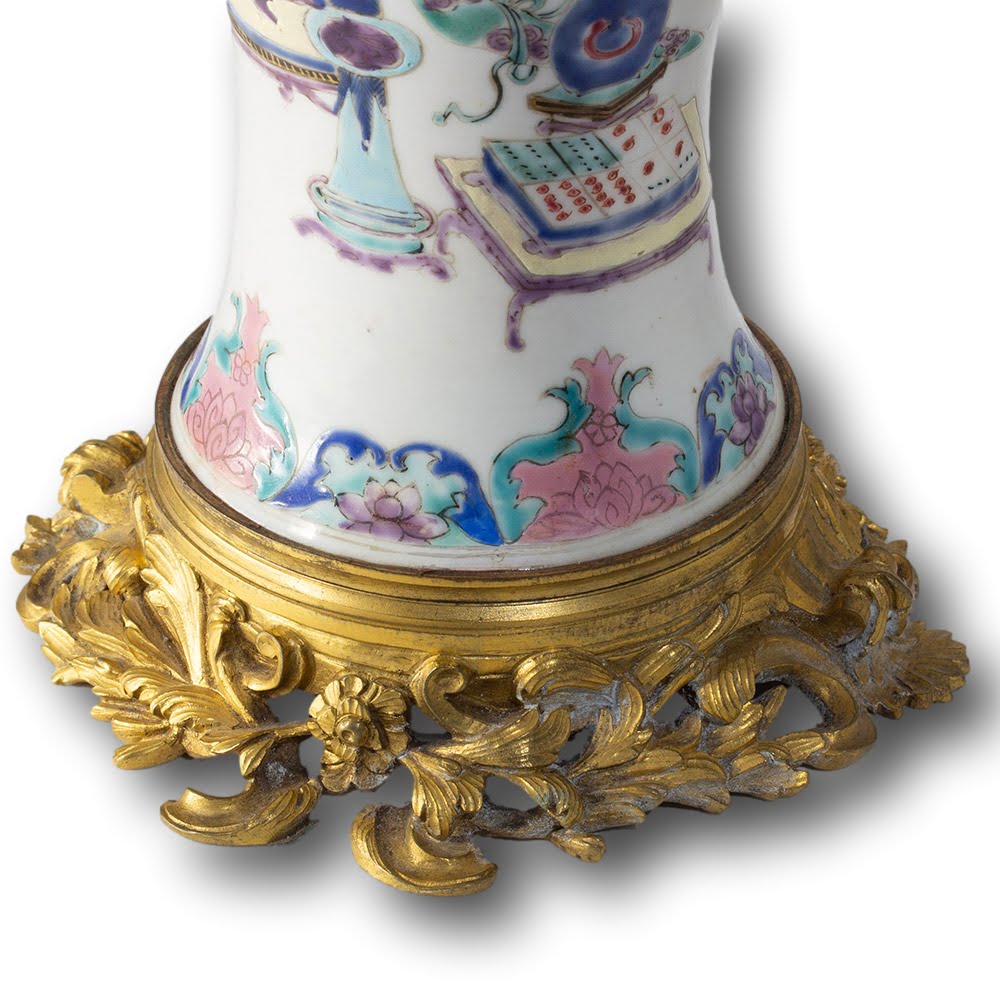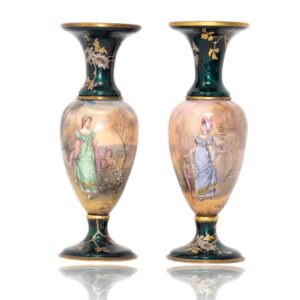Description
Famille Rose Pallet
From our Decorative collection, we are delighted to offer this pair of Antique Chinese Ormolu and Porcelain Lamps. The Lamps beautifully hand painted in famille rose colours with a waisted shape featuring objects containing blossoming flowers. The top border of the vases are decorated with alternating ruyi style lappets decorated with blossoming flowers matching the base with a similar style border. The Antique Chinese vases are mounted in high quality bronze ormolu mounts with looped handles and a central column which has been fitted for electrics. The finials of the vases are a green jade hard stone and unscrew to fit the shades. The Antique Chinese vases date to the 18th century during the Qing dynasty during the reign of the Qianlong Emperor circa 1780. Both vases have both been rewired with a gold cable and three pin plug for UK 240v use and have been inspected for safety and PAT tested.
Lamp shades can be provided in addition if required.
Qianlong Emperor (1711-1799) also known as Emperor Gaozong of Qing or by his personal name Hongli, was the fifth emperor of the Qing dynasty and the fourth Qing emperor to rule over China proper. The fourth son of the Yongzheng Emperor. The Qianlong emperor reigned officially from October 1735 to February 1796.
Famille rose is a type of Chinese porcelain introduced in the 18th century and defined by the presence of pink colour overglaze enamel. The colour palette is thought to have been introduced in China during the reign of Kangxi (1654–1722) by Western Jesuits who worked at the palace, but perfected only in the Yongzheng era when the finest pieces were made. For further information on Chinese periods see our article The Qing & I.
Ormolu is the technique of applying finely ground, high-carat gold–mercury amalgam to an object of bronze. The mercury is driven off in a kiln leaving behind a gold coating. The French refer to this technique as bronze doré and in English it is often referred to as gilt bronze. It is a finishing technique which adds an overall gold look to any object without the massive cost and impracticality of making an object out of solid gold. Mercury was outlawed in the 1830’s in France however it was still used until the early 1900s.
Bronze an alloy consisting primarily of copper with approximately 12–12.5% tin and often with the addition of other metals (including aluminium, manganese, nickel, or zinc) and sometimes non-metals, such as phosphorus, or metalloids such as arsenic or silicon depending on the age of the bronze and its origin. The additions of other metals produce a range of alloys that are usually harder than copper alone and carry useful properties such as strength. The earliest known use of bronze dates to the 5th millennium BCE from Iranian plateau, the bronze mix consists of arsenical copper and copper-arsenide. The earliest tin-copper-alloy recovered is dated to circa 4650 BCE and was found in Plocnik, Serbia. It is believed to have been smelted from a natural tin-copper ore.
Antique a collectable object such as a piece of furniture or work of art that has a high value because of its age and quality. Objects of this nature are generally considered antique at 100 plus years of age.
Measurements Total Height 72cm x 20cm Wide x 13.5cm Deep (28 x 7.8 x 5.3 Inches)
Condition Excellent condition, wired and ready for use.
With every purchase from Jacksons Antique, you will receive our latest product guide, full tracking information so you can monitor your shipment from start to finish and our personal no-hassle, money-back policy giving you that extra confidence when purchasing.


